To More Inquiry


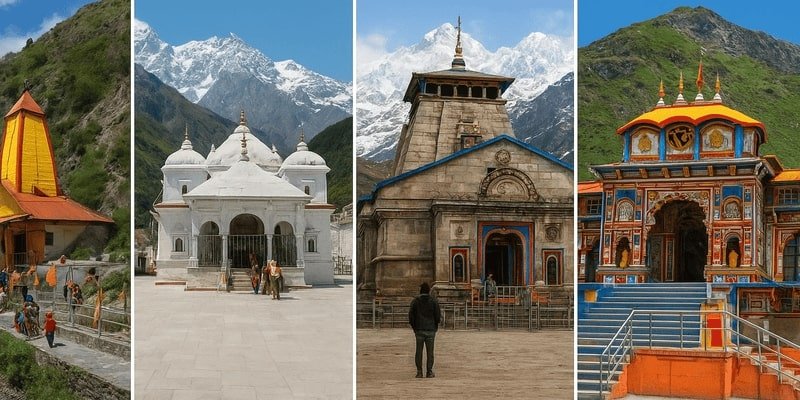
Char Dham Yatra is a sacred circuit that can be visited in the Garhwal region of Uttarakhand in the northern part of India. Here, you can explore the four Holy shrines, Yamunotri, Gangotri, Kedarnath, and Badrinath Dha, which are nestled in the Himalayan foothills of Uttarakhand.
These four sacred sites are witnessed by thousands of pilgrims and devotees who want to embark on this spiritual journey and seek the divine blessing of the deities. With Chardham tour packages, you will have ample opportunity to explore different temples of Uttarakhand, with well-maintained transportation and comfortable accommodation.
You can also enjoy the Chardham luxury tour package, where you will get all the premium arrangements, and can also opt for the Chardham helicopter package, which will let you complete your Chardham Yatra in just 5 days, which will surely save your time as well as effort. The Chardham Yatra packages of Travel Ride will provide your personalized assistant, which will make your sacred journey more convenient and enriching.
The 4 Dham Yatra package for family is specially designed for family members who want to explore these sacred temples with comfort, as in these packages, you will be getting a well-maintained itinerary with family-friendly accommodations that will provide you with cozy overnight stays at these remote areas of Uttarakhand.
The Chardham Yatra package is a wholesome package for adventure lovers and nature appreciators, as on your spiritual Yatra, you will be witnessing some breathtaking landscapes and will also enjoy the trekking experience, especially at Kedarnath Dham, where you will be trekking for 21 km to reach the sacred shrine of lord Shiva. The Chardham trip package will offer you a comprehensive tour where you will be visiting four Holy shrines, where you can immerse yourself in deep meditation and have a rejuvenating experience in the divine land of Uttarakhand.
Get ready for a religious tour with us. Travel Ride, the travel agent for Chardham, offers our customers affordable Chardham Packages that are responsible for making your Chardham Yatra a memorable one. Grab a wonderful chance to get drenched in the serenity of Chardham- Kedarnath, Badrinath, Gangotri, and Yamunotri. Nestled among the serene heights of the majestic Himalayas, the Chardham draws a maximum number of pilgrims each year, and thus, it is the most important hub of religious travel in the whole of Northern India.
Witnessing the picturesque beauty of the mountains solemnly provides strength to the pilgrims as they move toward their destination. We are responsible for your memorable trip. Travel Ride's Chardham trip packages hold well-maintained itineraries that prove to be sweet ones. We have a team of holiday experts who are responsible for making your tour a perfect one.
We are responsible for taking care of everything from accommodation in luxurious hotels to scrumptious meals for our customers. Chardham Yatra Package From Haridwar, Mumbai, Kolkata, Bangalore, Chennai, Hyderabad, Nagpur, Thane, Pune, Delhi, Dehradun, Indore, Surat, Ahmedabad, Vadodara, Maharashtra, Bhopal, Coimbatore, Guwahati, Kochi, Kozhikode, Lucknow, Trivandrum, Visakhapatnam, Vijayawada, & Jaipur. Book and get exclusive offers as per your taste and preferences.
| Chardham Tour Packages | Price (Per Person) | Duration | Detail |
| Chardham Yatra Package by Helicopter | ₹ 220,000 | 4 Nights | |
| 12 Days Chardham Package | ₹ 53,000 | 11 Nights | |
| Chardham Tour Package | ₹ 43,000 | 10 Nights | |
| Chardham Tour Package from Dehradun | ₹ 42,500 | 9 Nights | |
| Chardham Tour Package from Delhi | ₹ 52,000 | 11 Nights |
This yatra is to the four holy Dhams known ...
Per Person
Kedarnath Dham is covered with snow during the winter ...
Per Person
In this nights and days the nbsp strong Chardham ...
Per Person
span style color This -night and -day nbsp strong ...
Per Person
Per Person
Per Person
Per Person
Per Person
Per Person
Per Person
Per Person
Per Person
Per Person
Per Person
Per Person
Showing 1 of 3 pages
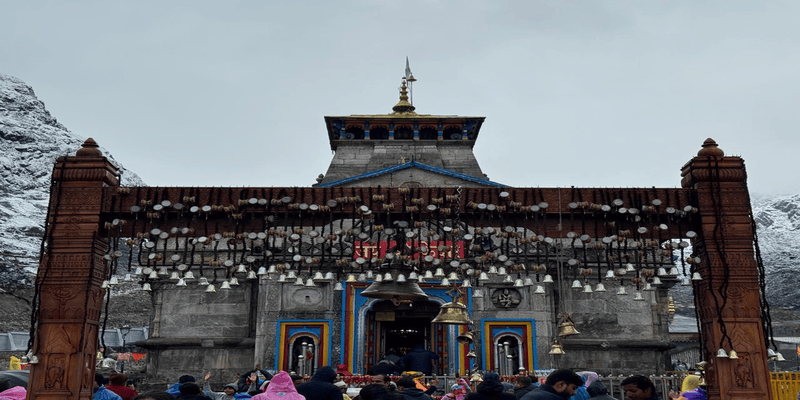
Hindu devotees in millions make a sacred pilgrimage to the Chardham with the sole intention of cleansing their souls by asking forgiveness for their sins. People want to go on a Chardham Yatra at least once during one’s lifetime for spiritual upliftment and to attain freedom from the cycle of life and death.
People also want to attain peace and prosperity in their lives and thus undertake the Chardham Yatra to acquire the divine blessings of the four sacred deities, who have mythological powers to heal and bestow moksha to the pilgrims offering prayers.
As the Chota Char Dham is set in the majestic Himalayas that have a mystical aura about them, the four abodes beckon the devotees to it.
Adi Shankaracharya, the Indian philosopher and an exponent of Advaita Vedanta, gave the concept of Chardham that every Hindu has the desire to visit at least once in their lifetime. Hindus believe that one can attain salvation by visiting the Chardham.
Of the circuits, the Chardham in the Himalayas of Uttarakhand is the one that is called Chota Chardham requires one to visit sequentially by starting from Yamunotri and going on to Gangotri, Kedarnath, and finally ending one’s pilgrimage by visiting Badrinath. Yamunotri Dham is the place where the river Yamuna has its source.
Legend has it that Yamraj, the brother of Yamuna, bestowed a holy boon to her on the auspicious day of Bhai Dooj that whoever takes a dip in the Yamuna river at Yamunotri Dham will attain salvation and will thus be freed from being taken to Yamlok.
Yamunotri Temple seats Goddess Yamuna and is located a 5km trek from Jankichatti. It is situated on the bank of the holy river Yamuna. Gomukh, the source of the holy river Ganga, is located in Gangotri Glacier at a trekking distance of 19km from Gangotri town.
The narrative from Hindu mythology goes back to ages ago when King Sagar’s 60000 sons were converted to ashes by the sage Kapil, who was disturbed by them during his meditation. He also cursed them that their souls shall attain salvation only when their ashes are immersed in the heavenly river Ganga.
Many years later, the grandson of King Sagar, King Bhagirath, sat in deep penance to please Goddess Ganga for many years.
Finally, the holy Ganga descended from heaven with a ferocious speed that was contained by Lord Shiva on his luscious looks and then released the holy Ganga in the realm of the earth at Gangotri from where it flowed to dissolve the sins of the 60000 sons of King Sagar and their souls attained salvation and ever since Hindus immerse the ashes of the mortal remains of their departed in the holy river Ganga.
Kedarnath temple is in the Kedarkhand region of the state of Uttarakhand. The temple is located at a height of 3583 m and can only be reached by an uphill trek of around 22km. Kedarnath temple has one of the twelve Jyotirlingas of Lord Shiva. As per the mythological account, Nara-Narayana requested Lord Shiva to reside here, to which he agreed.

Legend says that the Pandavas, on the advice of sage Vyasa, came here to ask forgiveness for killing their kith and kin in the Kurukshetra war.
Lord Shiva thought otherwise and turned into a bull and camouflaged himself among the cattle, but on being recognized by the Pandavas, sank himself into the ground, going headfirst. It was Bhima who caught him by the tail, forcing lord shiva to appear before them and forgive them. Pandavas then built the temple at Kedarnath.
Badrinath Dham temple is located in the northern part of India and is the only temple among the Chota Chardham pilgrim sites that is surrounded by snow-clad mountains and is situated at a height of 3300m. The Badrinath Dham area is referred to as Badrikaashram in the ancient Hindu scriptures, and the holy Bhagavata Puran mentions lord Vishnu undergoing penance here in his incarnation as Nara and Narayan since time immemorial for the well-being of all living forms of the Universe.
Another narrative from Hindu mythology states that Lord Vishnu sat meditating in the forest full of Badri bushes. To shelter meditating Lord Vishnu from the sweltering heat of the Sun, Goddess Luxmi stood next to him, providing shade, and with time, Goddess Lakshmi turned into Badri Vishal herself, and Lord Vishnu became the Badrinath. Padma Purana mentions the area in and around Badri Dham as replete with spiritual treasure.
Chardham Yatra by helicopter is the easiest and fastest way to pay a visit to the entire pilgrimage in a short time. Whereas trekking can take a day or two for the devotees to reach. A helicopter tour for 4 Dham is ideal for those who have a shortage of time and for those who are also facing health issues and are not able to perform the pilgrimage relatively quickly.
Some helicopter services, both private and public, are available for the Chardham Yatra in Uttarakhand, which offers ample Char Dham Yatra. One can go for Charter planes available for the Kedarnath and Badrinath Yatra. Pilgrims, according to their choice, can choose to visit only Kedarnath or Badrinath by charter. The helicopter operates from Sahastradhara, Dehradun helipad, every morning for Chardham and returns to the city every evening.
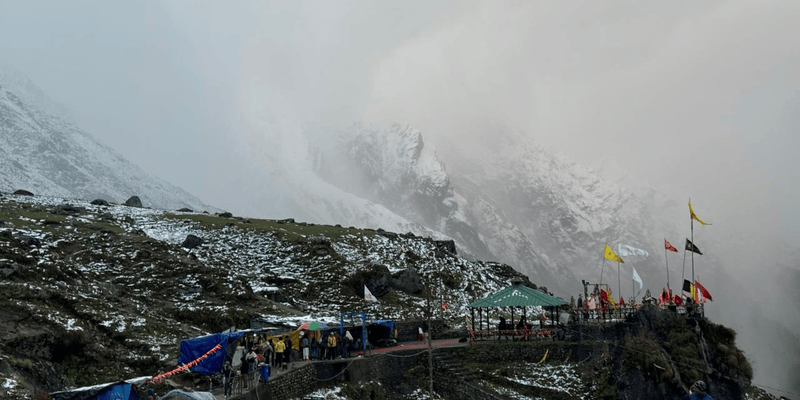
The four pilgrimage sites- Yamunotri, Gangotri, Kedarnath, and Badrinath are holy pilgrimage sites and are open only for six months. The dates are generally declared by the Char Dham committee, Kedar-Badri Mandir Samiti, before the holy day of Akshaya Tritiya or Adha Teej. The Yamunotri and Gangotri temple opens on the day of Akshaya Tritiya every year, followed by the portal opening of the Kedarnath and Badrinath temples after a couple of days.

The Yamunotri and Kedarnath Dham close on Yama Dwitiya Bhai Dook, whereas Gangotri Dham closes on the day of Diwali, and the Badrinath temple closes on the day of Vijay Dashmi. The holy shrines of Chardham open every year with the arrival of summer in April-May and close with the start of the winter months- Oct-Nov.
If you want to travel to Chardham, which is Yamunotri, Gangotri, Kedarnath, and Badrinath Dham by road, then you can take the popular route for this pilgrimage, which is mentioned further as an outline of your pilgrimage journey. The Charm Yatra starts from Haridwar or Rishikesh, and both these towns are well connected by road, air, and rail. By air, you can reach Dehradun’s Jolly Grant airport, and for the rail route, you can reach Haridwar or Rishikesh railway station.
The road route of the pilgrimage Yatra starts with Haridwar and Rishikesh, and from there you can move forward to Barkot via Dehradun and Mussoorie road, which is approximately 180 km. Then workout you can reach Janki Chatti, which is approximately 50 km in distance. After reaching Janki Chatti, your trek of 6 km starts from Janki Chatti to the Yamunotri temple.
After paying homage at the Yamunotri temple, you need to move forward to the Gangotri temple, for which you will travel from Janki Chatti to Uttarkashi via Barkot, which is approximately 150 km, and from Uttarkashi, you will be visiting Gangotri Dham, which is around 100 KM and can be traveled through your vehicle.
To reach Kedarnath Dham, you need to travel from Gangotri to Guptkashi via the Uttarkashi and Rudraprayag route, which is around 280 km, and on the next day, you will be transferred from Guptkashi to Gaurikund, which is approximately 30 km, and from Gaurikund, you need to trek for another 18 km to reach Kedarnath Dham.
After paying homage at Kedarnath Dham, you will be visiting the 4th Dham which is the Badrinath Dham which is also a part of the Bada Chardham Yatra, for which you need to be transferred from Gaurikund to Joshimath via Rudraprayag and Chamoli district which is approximately around 200 km in distance and from Joshimath you will reach be Badrinath by covering the distance of 45 km.

Return from the Chardhams
After getting the blessings from all four Dhams of Uttarakhand, you will be returning from Badrinath to Rishikesh/Haridwar via Joshimath, Chamoli, and Rudraprayag by covering the proximate distance of 300 km, and here your char Dham Yatra by road ends.
Taking a helicopter to the Chardham can make the pilgrimage more convenient and time-efficient. Here’s an outline of how the helicopter service typically works:
Your Chardham Yatra by helicopter starts from the Sahastradhara helipad, which is located in Dehradun. From here, you will take your helicopter to reach the Kharsali helipad, which is located near Yamunotri Dham, and it will take approximately 45 minutes as your flight time. From the Kharsali helipad, you will be trekking for 6 km, or you can take a palki/pony. On arrival, you will spend the night at Yamunotri Dham.
The next day, to reach Gangotri, you will be flying from Kharsali helipad 2 Harshal helipad, which will take approximately 1 hour of flight time. From the Harsil helipad, you need to drive for 25 km to reach Gangotri Dham. On arrival, your overnight stay will be at Gangotri Dham.
The next day, as you will be traveling from Gangotri to Kedarnath Dham, you need to take your helicopter from Harsil helipad to reach Phata or Sersi helipad, which will take approximately 45 minutes of flight time. From the Sersi or Phata helipad, you will be further transferred to the Kedarnath helipad. After visiting the temple, your overnight stay will be near the Kedarnath temple.
Moving further from Kedarnath to Badrinath, you will be flying from the Kedarnath helipad to the Badrinath helipad, which will take approximately 45 minutes of flight time. On arrival, your overnight stay will be near Badrinath Dham.
After seeking blessings from all four Dham, you will be returning from Badrinath to Dehradun’s Sahastradhara helipad directly, which will take approximately 1 hour of flight time.
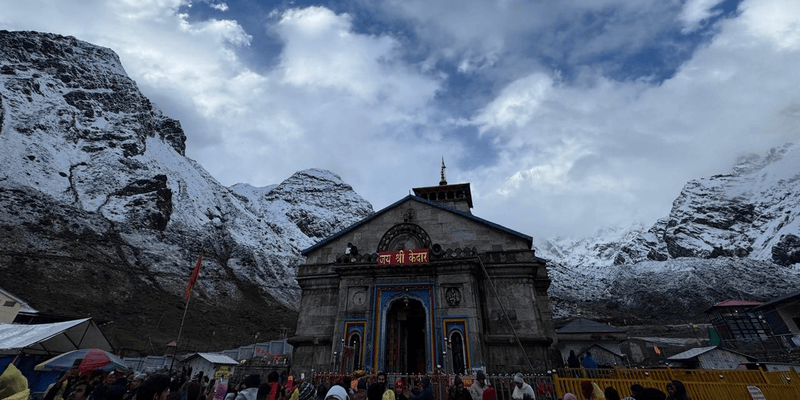
The best time to visit the Chardham pilgrimage sites (Yamunotri, Gangotri, Kedarnath, and Badrinath) is during the following periods:
During the time period of May to June, the weather remains pleasant and clear, and the temperature ranges from 10°C to 20°C. Since this time is safe, the roads are open, and this time is also considered an ideal time for both helicopter and road journeys. The doors of the temple open during late April or early May.
The time period from September to October is considered cool and comfortable as the temperature changes from 5°C to 15°C, and during this time period, the road remains in good condition. Also, the monsoon season comes to an end, which makes the journey comfortable for the devotees. One can also witness the lush green natural beauty during the Yatra.

It is not permissible to travel during the monsoon months as you can face heavy rainfall, which can lead to landslides and road blockage. Yatra during the monsoon time can be hazardous due to the risk of landslides and slippery roads. Also, many routes become impassable, and the helicopter services stop.
During the winter months, the area experiences temperatures dropping below the freezing point, which makes the atmosphere extremely cold. Additionally, there is heavy snowfall, which leads to road closure and closure of temple doors, making the Yatra impossible during the winter months.
Each of these sites holds significant religious importance and is surrounded by breathtaking natural beauty, making the Chardham Yatra a spiritually enriching and visually stunning journey. Here’s a brief description of each of the four sacred sites of the Chardham pilgrimage:
Yamunotri Dham is located in the Uttarkashi district of Uttarakhand, which is at an elevation of approximately 32093 m and around 10084 feet from sea level. Yamunotri Dham is the source of the Yamuna River, which is dedicated to the goddess Yamuna. It is believed that if devotees take a dip in the Yamuna's water, it cleanses all their sins from them and protects them from untimely death. The major attractions of Yamunotri are the Yamuna temple, Surya Kund, which is also known as a hot water spring, and Divya Sheela, which is a rock pillar.
Gangotri temple is located in the Uttarkashi district of Uttarakhand which is approximately at an approximate elevation of 3100 m and 10,200 feet above sea level. Gangotri temple is the source of the river Ganga and is dedicated to the goddess Ganga. River Ganga is considered the most sacred river of India, and it is believed that if you take in the water of this Holy river, it will purify your soul. The main attraction of Gangotri is the Gangotri temple, Bhagirathi Sheela, which is the rock where King Bhagirath meditated, and the Gaumukh glacier, which is the actual source of the river Ganga and is located at a distance of 19 km from the temple.
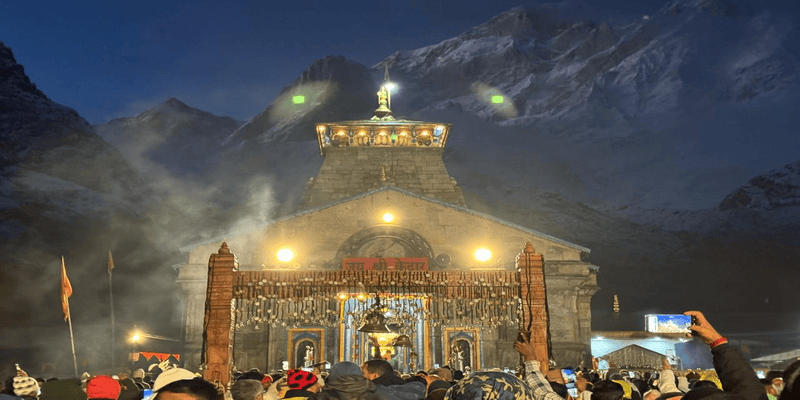
The holy Kedarnath temple is located in the Rudraprayag district of Uttarakhand, which is at an elevation of 3583 m and 11755 feet above sea level. Kedarnath is one of the 12 Jyotirlingas of lord Shiva and is the remotest of all four Chardham sites. This temple was believed to be constructed by the Pandavas, and later, it was restored by Guru Adi Shankaracharya. Some of the major attractions of Kedarnath Dham are, Bhairav temple and the Scenic backdrop of snow-covered peaks of the Kedarnath range.
Badrinath Dham is located in the Chamoli district of Uttarakhand, which is at an elevation of approximately 3300 m and 100827 feet above sea level. The main significance of Badrinath Dham is that it is dedicated to lord Vishnu and is considered one of the sacred temples in Hinduism. The Badrinath Dham is also part of the Chota Char Dham Yatra as well as the large Chardham Yatra, which includes the four sacred sites such as the Badrinath temple, Dwarka, Puri, and Rameshwaram temple. The major attractions of Badrinath are the Badrinath Dham, Tapt Kund, which is a hot water spring, and Neelkanth Peak.
Here are some nearby attractions for each of the Chardham sites that you can visit to enhance your pilgrimage experience:
It is a small, scenic village in the Uttarkashi district, Uttarakhand, India. It serves as the base for the trek to the Yamunotri Temple, one of the four sacred shrines of the Char Dham pilgrimage. The village is known for its hot water springs, serene natural beauty, and tranquil environment, making it a popular stop for pilgrims and trekkers alike.
It is a picturesque village located in the Uttarkashi district, Uttarakhand, India. It lies at the confluence of the Hanuman Ganga and the Yamuna rivers. The village serves as a starting point for the trek to Yamunotri, one of the Char Dham pilgrimage sites. Known for its serene environment, lush greenery, and tranquil river views, Hanuman Chatti is a popular stop for pilgrims and nature enthusiasts.
It is an ancient archaeological site located in the Chamoli district of Uttarakhand, India. It is renowned for its collection of around 200 stone sculptures dating back to the 9th- 12th centuries, showcasing the intricate craftsmanship and artistic skills of that era. The site holds significant historical and cultural importance, attracting scholars, historians, and tourists interested in exploring India's rich heritage and religious artistry.
It is a charming town situated in the Uttarkashi district of Uttarakhand, India. It is nestled amidst lush green mountains and offers breathtaking views of the Himalayas. Barkot serves as a popular stopover for pilgrims visiting the Yamunotri Temple and is known for its apple orchards, pleasant weather, and serene surroundings. The town provides a peaceful retreat with opportunities for trekking and experiencing the natural beauty of the region.
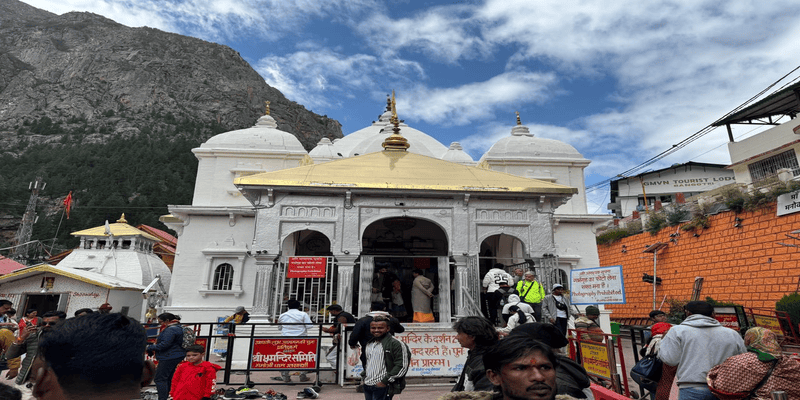
It is a picturesque village located in the Uttarkashi district of Uttarakhand, India. Situated along the banks of the Bhagirathi River, it is renowned for its stunning natural beauty, surrounded by dense forests of pine and deodar trees. Harsil is often referred to as "Mini Switzerland" due to its scenic landscapes, snow-capped peaks, and clear mountain streams. It serves as a perfect destination for nature lovers, trekkers, and those seeking tranquility amidst Himalayan serenity.
located in Uttarakhand, India, is a prominent glacier and the source of the Bhagirathi River, which eventually becomes the Ganges River. It is named after its resemblance to a cow's mouth (Gaumukhi in Hindi). The glacier is sacred in Hindu mythology and attracts pilgrims and trekkers alike due to its spiritual significance and stunning glacial landscapes surrounded by towering Himalayan peaks.
It is a scenic mountain pass situated in the Uttarkashi district of Uttarakhand, India. It lies on the route to Gangotri, a significant pilgrimage site for Hindus. The pass offers breathtaking views of the rugged Himalayan terrain and is known for its challenging yet picturesque trekking trails. Bhairon Ghati is revered for its natural beauty and spiritual significance, attracting both adventurers and pilgrims seeking to explore the pristine landscapes of the region.
Triyuginarayan Temple: It is a sacred Hindu pilgrimage site located in the Rudraprayag district of Uttarakhand, India. It is famous for its association with the marriage of Lord Shiva and Goddess Parvati. The temple is believed to have been built in the Treta Yuga (hence the name Triyuginarayan, meaning "eternal fire"). Pilgrims visit this ancient temple to witness the eternal flame that is said to have witnessed the celestial wedding. The temple's serene surroundings amidst the Himalayan mountains add to its spiritual allure.
It is located in Uttarkashi, Uttarakhand region, and is a revered Hindu temple dedicated to Lord Shiva. It holds significant spiritual importance for devotees, offering a serene atmosphere for prayers and rituals. The temple's architecture and religious significance attract pilgrims seeking blessings and spiritual solace amidst the scenic beauty of the Uttarkashi district.
It is located near the Kedarnath Temple in Uttarakhand, India. It is dedicated to Lord Shiva and is revered as one of the sacred sites in the region. The temple holds historical and religious significance, attracting devotees and pilgrims who visit Kedarnath to pay homage to Lord Shiva. The serene surroundings of Omkareshwar Temple add to its spiritual ambiance, offering a peaceful retreat amidst the majestic Himalayas.
Chorabari Tal, also known as Gandhi Sarovar, is a glacial lake located near Kedarnath in Uttarakhand, India. Situated at an altitude of about 3,900 meters (12,800 feet), it is surrounded by snow-capped peaks and offers stunning views of the Himalayan landscape. The lake is named after its shape, resembling a bird's eye (Chorabari means "lake of the bird" in Hindi). Chorabari Tal is revered for its pristine beauty and is a popular trekking destination for nature enthusiasts and pilgrims visiting the Kedarnath region.
It is a small pilgrimage town located in Uttarakhand, India, situated at the base of the Kedarnath trekking route. It is named after Goddess Parvati (Gauri), the consort of Lord Shiva. Gaurikund is famous for its hot water springs, where pilgrims traditionally take a purifying bath before embarking on their journey to the Kedarnath Temple. It serves as the starting point for the trek to Kedarnath and offers scenic views of the surrounding Himalayan mountains and lush greenery.
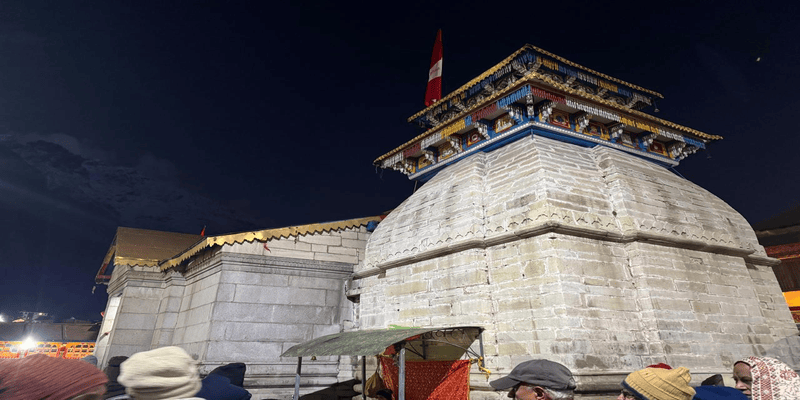
It is the last inhabited village near the Indo-China border in Uttarakhand, India. Situated at an altitude of around 3,200 meters (10,500 feet), it is renowned for its scenic beauty, traditional stone houses, and cultural significance. Mana Village holds mythological importance as it is believed to be the place where the Mahabharata hero, Bhima, built the iconic stone bridge over the Saraswati River. It attracts tourists and pilgrims visiting nearby pilgrimage sites such as Badrinath and Vasudhara Falls, offering a glimpse into rural Himalayan life and breathtaking mountain vistas.
This temple is dedicated to Lord Narsingh, an incarnation of Lord Vishnu. It is located close to the famous Badrinath Temple and is a significant pilgrimage site for Hindus. The temple houses a unique idol of Lord Narsingh in a half-man, half-lion form, symbolizing protection and strength. Pilgrims visit the temple to seek blessings and witness the powerful deity revered for safeguarding devotees and maintaining cosmic order according to Hindu mythology.
It is a mesmerizing waterfall located near Mana Village in Uttarakhand, India. It cascades down from a height of about 122 meters (400 feet) amidst the stunning Himalayan landscape. The falls are revered for their natural beauty and spiritual significance, with local beliefs suggesting that the waters have the power to cleanse sins and grant blessings. Vasudhara Falls is a popular trekking destination offering breathtaking views and a tranquil atmosphere for visitors to enjoy nature's splendor in the Garhwal region.
Tapt Kund is a natural hot water spring located in Badrinath, Uttarakhand, India. It is renowned for its thermal waters, which are believed to have medicinal properties. Pilgrims visiting the Badrinath Temple traditionally take a dip in Tapt Kund before entering the temple complex, as it is considered purifying and spiritually significant. The temperature of the water remains relatively high throughout the year, providing a soothing experience amidst the cold mountain climate.
Vyas Gufa is a sacred cave near Badrinath in Uttarakhand, India. Vyas Gufa is believed to be the place where the sage Vyas is said to have composed the Mahabharata with the help of Lord Ganesha. It holds great spiritual significance for Hindus and attracts pilgrims and visitors interested in ancient scriptures and mythology.
This gufa is associated with Lord Ganesha, who is believed to have helped sage Vyas in writing the Mahabharata by scribing it as Vyas narrated the epic. Both caves offer a serene and meditative atmosphere, nestled amidst the Himalayan landscape, and are popular pilgrimage sites for devotees seeking spiritual solace and historical insights.
It is a scenic hill station and ski destination nestled in the Chamoli district of Uttarakhand, India. Situated at an altitude of around 2,800 to 3,050 meters (9,200 to 10,000 feet) above sea level, Auli is renowned for its panoramic views of the snow-capped Himalayan peaks, including Nanda Devi, Mana Parvat, and Kamet. It is a popular destination for skiing enthusiasts, offering slopes of varying difficulty levels and modern ski resorts with amenities for tourists. Auli also attracts nature lovers and adventure seekers throughout the year for its pleasant weather, lush meadows, and opportunities for trekking and sightseeing amidst breathtaking natural beauty.

Devprayag holds great religious significance as one of the Panch Prayag (five confluences) in the Himalayas. It is believed that Lord Rama performed penance here to cleanse himself of the sin of killing Ravana, making it an important pilgrimage site for Hindus. The town offers picturesque views of the rivers merging amidst the backdrop of majestic mountains, attracting both pilgrims and tourists seeking spiritual solace and natural beauty.
Rudraprayag is not only a scenic town surrounded by the Garhwal Himalayas but also holds great religious significance as one of the Panch Prayag (five confluences) in the Himalayas. It is named after Lord Shiva (Rudra), and the confluence is believed to be a sacred place where Shiva performed his Tandava dance. Rudraprayag is a popular stop for pilgrims and tourists exploring the Char Dham pilgrimage circuit, offering serene views and a spiritual atmosphere amidst the mountains.
Karnaprayag is one of the Panch Prayag (five confluences) in the Himalayas, revered for its religious significance in Hindu mythology. The town offers scenic views of the rivers merging amidst the backdrop of the Himalayan peaks. Karnaprayag serves as a stopover for pilgrims and tourists traveling to the nearby pilgrimage sites and trekking routes in the Garhwal region, providing a tranquil setting for spiritual reflection and natural beauty.
Nandprayag holds religious significance as one of the Panch Prayag (five confluences) in the Himalayas. The town offers picturesque views of the rivers merging amidst the lush greenery and towering Himalayan peaks. Nandprayag is visited by pilgrims and tourists seeking spiritual experiences and natural beauty while exploring the Char Dham pilgrimage circuit and nearby trekking routes in the Garhwal region.
At Vishnuprayag, the Alaknanda River converges with the Dhauliganga River, forming a majestic confluence against the backdrop of the Himalayas. The town is a sacred pilgrimage site for Hindus and offers stunning views of the merging rivers amidst serene natural surroundings. Visitors to Vishnuprayag often find solace in its spiritual ambiance and appreciate the scenic beauty of this Himalayan region.
This is a revered Hindu temple located in Uttarakhand, India, along the banks of the Alaknanda River. It houses an ancient idol of Goddess Dhari Devi, who is worshiped as the protector of the region. The temple is known for its picturesque location amidst the Himalayan foothills and the Alaknanda River's rushing waters. Dhari Devi Temple holds significant spiritual importance, especially among locals, and attracts devotees seeking blessings and protection from natural calamities.

The registration process for the Chardham Yatra is mandatory and helps manage the pilgrimage's safety and logistics. Here is a step-by-step guide to the registration process:
Packing the right items for the Chardham Yatra is crucial for a comfortable and safe pilgrimage. Here’s a list of essential things to carry:
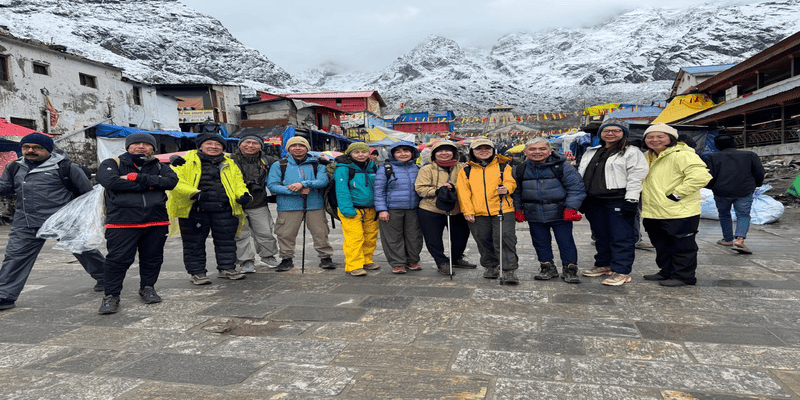
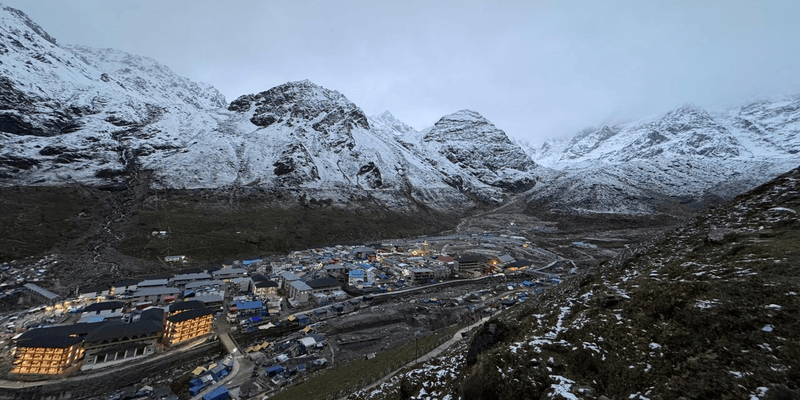
The Chardham Yatra is a spiritually enriching journey with plenty of activities and experiences to enhance your pilgrimage. Here are some things to do during the Chardham Yatra:
On your Chardham Yatra, you can explore four Holi temples that are Yamunotri, Gangotri, Kedarnath, and Badrinath. You can offer your prayers in these temples and take a holy dip in the water of the Yamuna and Ganga rivers, also you can also perform evening and morning Aarti at Kedarnath and Badrinath. One can also take a dip in a hot water spring at the Kund located in Badrinath.
One can perform activities like meditation and yoga in a calm and positive environment, which is apt for meditation and practicing yoga, especially in magnificent places like Mana village and Harsil village.
If you are an adventure enthusiast, then you can also enjoy trekking. At Yamunotri Dham, there is a 6 km track from Janki Chatti to the Yamunotri temple, and at Kedarnath Dham, it is an 18 km trek from Gaurikund to Kedarnath. On your trekking path, you will witness some eye-pleasing and enchanting nature views.
In the Chota Chardham Yatra, there are magnificent nearby attractions that can be explored during the Yatra, such as Harsil village, located near Gangotri Dham, and Mana village, which is the last Indian village located on the Indo-Tibetan border. You can also enjoy a short trek from Mana village to Vasudhara Falls, which offers stunning views of nature.
On your Chardham Yatra, you can enjoy some breathtaking landscapes and drive through Scenic views of the Himalayan ranges, which will make you feel blessed by nature.
This devotional Yatra will let you have some cultural experience where you can taste some of the local cuisines of the Garhwal and Kumaon regions of Uttarakhand. These local dishes from the Garhwal and Kumaon regions will make your taste buds dance.
On your Yatra, you can engage and interact with the local community, where you can learn about the culture and tradition of local people, and also you can understand their way of life in hilly regions.
You can also buy some of the souvenirs as a memory of your Chardham Yatra, where you can get some local handicrafts and woolen clothes in the local market of places like Uttarkashi, Guptkashi, and Joshimath. Also, you can explore the local markets of Rishikesh and Haridwar.
One can also enjoy river rafting and Rishikesh before starting your pilgrimage Yatra or at the end of your pilgrimage Yatra. Whitewater river rafting is a famous adventure activity that is performed in the holy Ganga water at Rishikesh.
You can also enjoy camping amidst nature in different places of Uttarakhand such as Harsil, Rishikesh etc. You can also enjoy short treks while camping.
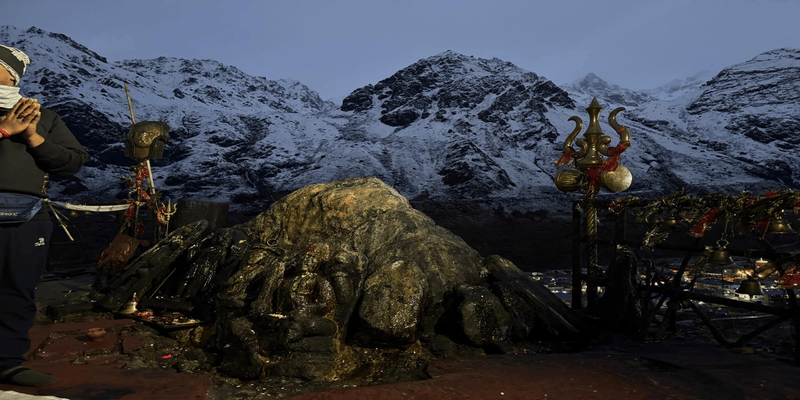
To book a Char Dham package with Travel Ride, you need to follow these steps:
A luxury tour package offers travelers an opulent and exclusive travel experience with premium accommodations, personalized services, and unique experiences. It typically includes stays at luxurious hotels known for their exceptional comfort and amenities.
Transportation is often in high-end vehicles or private helicopters, providing convenience and privacy. These packages also feature exclusive tours, the best dining experiences, and access to cultural attractions with VIP privileges. Personalized services such as dedicated tour guides, concierge assistance, and 24/7 customer support ensure a seamless and indulgent travel experience, catering to the discerning preferences of luxury travelers.
A deluxe package offers travelers a comfortable and enhanced travel experience with upgraded accommodations and added conveniences compared to standard offerings. Typically, it includes stays in well-appointed hotels that provide superior comfort and amenities. Transportation may include upgraded vehicles for transfers and sightseeing, ensuring a more comfortable journey.
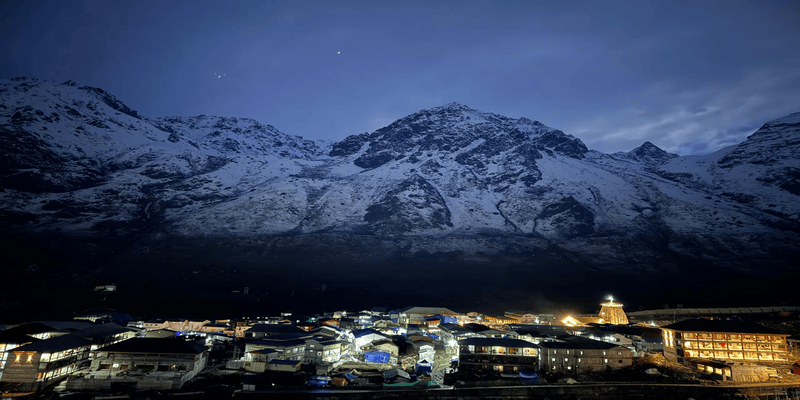
Deluxe packages often feature guided tours to popular attractions, allowing travelers to explore destinations with added insights and convenience. Meals may include upgraded dining options, offering a taste of local cuisine or international flavors. Overall, a deluxe package strikes a balance between comfort, convenience, and value, appealing to travelers seeking a step up from standard travel experiences without reaching the premium luxury level.
A standard tour package offers essential travel services and accommodations at a moderate cost, providing a basic yet comfortable experience for travelers. Typically, it includes stays in budget-friendly hotels or guesthouses that offer basic amenities and services. Transportation is usually in standard vehicles or coaches, facilitating transfers and sightseeing tours to popular attractions.
Meals may include daily breakfast or select meals, depending on the package, with options to explore local eateries. Standard tour packages often feature guided tours or excursions to key landmarks or cultural sites, providing travelers with a structured itinerary to discover the destination's highlights. Overall, a standard tour package offers affordability and convenience, making it suitable for budget-conscious travelers seeking a straightforward travel experience.
You can anytime request for a pocket friendly and customized package as per your requirements.
No need to pay complete amount in one go, it can be paid in 3 installments of 30%, 30% and 40%.
Our travel support is available in your assistance at all times for a hassle free trip.
We are having the expertise of planning more 5000+ tours all around India.
The Holy Pilgrimage tour of Chardham Yatra ends during October when the doors of all four Dhams close one by one. Kedarnath and Yamunotri Dhams close on the occasion of Bhai Dooj/Dwitiya, other than this the doors of Gangotri Dham closes on the occasion of Diwali. Lastly, the doors of the Badrinath temple closes on the occasion of Vijay Dashami. All the Holy Dhams remain closed throughout the winter season as the area gets under the thick sheet of snow and weather conditions become a bit unfavorable.
Yes, you can complete two Dham yatra in a helicopter from the Sahastradhara helipad located in Dehradun. It takes approximately 3 to 5 days to complete do Dham yatra in a helicopter.
The trek for Kedarnath starts from Gaurikund and you need to trek for 17km to reach the temple. On the other hand, the trek for Yamunotri Dham starts from Jankichatti and is 6km long.
Yes, traveling to Kedarnath is safe for devotees but you need to take some extra care while traveling during the monsoon season as at that time there are more chances of landslides.
Yes, there are helicopter services available for Kedarnath Dham, you can board helicopters for Kedarnath from Guptkashi, Phata, Sitapur, and Sersi helipad.
Yes, special tickets are available for darshan but only at Kedarnath and Badrinath Dham, which can cost up to 2500-3000 per shrine. While in Gangotri and Yamunotri Dham, there are no such special tickets available, but you can conduct a special prayer session in these shrines by priests.
No, currently there is no railway connectivity to the four holy shrines but if you are coming from any part of India, Other than Uttrakhand then you can take the railway services to Haridwar and Rishikesh Railway stations which have good connectivity to other states of India. These are the last railway stations to reach Chota Char Dham after that you can hire local cabs and bus services.
If you want to book this helicopter service by yourself then you can log on to https://www.heliyatra.irctc.co.in/ they provide government services for helicopters. You can choose your helipad at your convenience from Phata, Sitapur, Guptkashi, and Sersi, or else you can give this responsibility to a local Travel Agent who will manage the booking process at your convenience.
There are medical facilities available in the places where you will be taking your night's halt and accommodations.
Since the Four holy shrines are located in a remote area so obviously you will be facing the problem of bad network connectivity. Since wifi signals are available you can buy any Indian SIM card for connectivity.
Since all four Shrines are located in environmentally vulnerable locations it is advised to take care of the environment as well while being on the trip, so here are the things you should not do while you are on this pilgrimage tour:
Do not throw your waste here and there.
Try not to carry any plastic bags but if you have so then dispose of them in dustbins only.
Carry a refillable water bottle to save you money and the environment.
Do not set up your tent at any place there are several spots given for the tents only set up your tents at these places.
Do not disturb any kind of wildlife but click their pictures again and again.
Do not throw any kind of waste in water bodies.
Since the shrines are located in remote areas so there are no proper networks available but if you are using a BSNL SIM card then you can get better network connectivity at various places on this Pilgrimage tour.
Many people show the symptoms of altitude sickness while climbing uphill due to low pressure on oxygen at higher altitudes. Other than this people also may suffer from dizziness, headache, muscle aches, and nausea. So for this, it is advisable to carry a proper box of first aid and also some specified meditations prescribed by your doctors. Also, you need to carry meditation to treat sore-throat, fever, cough & cold, blood pressure, pain killers, and bandages.
You need to carry your id proof which can be anyone from an Aadhar card, driving licence, and Passport which is mandatory for International devotees. Other than this no document is further required.
There are an end number of hotels that are located in the nearby areas of each shrine but if you are going on this pilgrimage yatra during the peak season then make sure that you book your accommodation in advance because it's really hard to find room on the spot as many hotels are fully packed by then.
You are going on a spiritual journey to detox your body and soul from all kinds of negativity. So it is advised not to consume or carry any kind of alcoholic substance or if you are caught with such substance then Uttarakhand police can levy a huge fine and can also imprison you.
Prior, these sorts of Pilgrimage yatra were hard to travel however now the Government focussed on this area and gave such countless offices for lovers going on journey visits. For a senior resident, there are different helicopter administrations to Chota Char Dham over this on the off chance that somebody can't bear the cost of that, at that point poney and Doly benefits are likewise given. There are numerous food slows down wherever while in transit to Chardham and all around created lodging offices for convenience is additionally given which makes Chardham yatra to senior residents exceptionally simple.
Yes, the Chardham yatra can be complete in just one day but it will be more hectic to do so, other than this you can complete this trip in the timespan of 2 days to do this Chardham yatra comfortably from Sahastradhara helipad located in Dehradun. If you don't take the helicopter service then it will take a minimum of 10 to 12 days to complete this Chardham yatra.
The Chardham Yatra itself takes 10 to 12 to complete the circuit of four holy shrines, so the journey becomes quite tiring and hectic. To release the stress of this journey you can take a halt at some prominent hill stations such as Auli, Chopta, Joshimath, Harshil, Rishikesh, Niti Valley, etc. but some of the hill stations are located off route so by adding 1-2 days more to you trip you can explore such beautiful hill stations and can complete this spiritual journey with some memorable moments.
You can explore the area of Chardham during the winter season but due to challenging weather conditions the doors of all four shrines are shut and the Doli of all four God and Goddess are brought to a temple located in a nearby area that is situated at a lower altitude. The Doli of Goddess Yamuna is brought to the Shani Dev temple at Kharsali, and the Doli of Goddess Ganga is brought to a shrine located in Mukhba village. The Doli of Baba Kedarnath is shifted to a shrine located in Ukhimath where they are worshipped for another six months. Lastly, the Doli of Lord Badri is shifted to Joshimath, so if you want to seek the blessing of these God and Goddess during the winter months then you can visit the mentioned shrines where the Doli is kept during the winter months and is worshipped for the next six months.
It is advisable to not plant this trip during the monsoon but even then you have planned you need to consider the following points:
Try to carry a waterproof bag and some plastic bag in which you can keep your wet clothes so that it doesn't mix with the dry ones.
Try to prevent your legs from fungal infection by keeping them dry.
You need to carry raincoats, waterproof shoes and tens, walking sticks and sleeping bags.
Going on the Chardham Yatra all on your own can give you many issues and bothers during the outing. In this case, you can book your Chardham tour package through Travel Ride, where you will be getting various choices of hotels within your budget and will also manage hassle-free trips for you, as we are having a good experience of what type of problems may arise during the trip and how to tackle these problems. All the information is given prior regarding all essential items to carry while going on this Holy Chardham Yatra.
There are two ways in which you can complete your Chardham yatra, the first one is by trekking and through a cab. This form is preferred by most of the devotees and is more economical and in this way, the trip starts from Delhi, Haridwar, and Rishikesh. The second way is to complete this Chardham yatra using a helicopter. The second way is a bit expensive and is preferred by only a few devotees.
Since all the Four holy Dhams are located at a higher altitude in the Garhwal region of Uttarakhand, so the temperature generally remains low at these shrines. Chardham yatra starts during April or May and ends during October month, so the seasons during which this yatra is done are from pre-summer till late-summer, and during this period day remains pleasant but the nights become cold and chilly.
The complete Chardham yatra can be done in a period of 11 to 12 days. If you have some extra time then you can also explore some attractions located in the proximity such as Gaumukh, Auli, Tapovan, Bhairavnath Temple, Along the valley, Vasuki Tal, Hemkund Sahib, and Chopta. The Chardham yatra can be commenced either from Haridwar, Rishikesh, or Delhi as per the convenience of devotees.
All four Holy Dhams are open for a period of mainly six months for the pilgrimage tour that starts in April or May. The opening date of the temple is set before the occasion of Akshay Tritiya, which is declared by Kedar-Badri Mandir Samiti and the Char Dham temple committee. The Occasion of Akshaya Tritiya is chosen for the commencement of Chardham yatra as this day is considered to bring Good luck and is highly auspicious.
You can take along the guide who will ascertain you to be on the right path and can also advise you for a better accommodation place. But there is no need for such guides if you are booking your package with local travel agents as everything is already booked in advance and the driver provided by them can guide you well throughout the trip.
There is no such issue faced by Solo or female travelers while traveling in Devbhoomi Uttarakhand because mostly people are helpful, humble, and give the correct guidance. But for a better experience, it is suggested to have everything booked in advance through an agent to have a cherishing memory of this trip for a lifetime.
If you are opting for a helicopter ride then there is no compulsion to take a halt at Rishikesh/Haridwar but if you are traveling by private can then you need to take halt at Rishikesh/Haridwar as the journey is a bit long and while driving in hilly regions more time is consumed so you need to take a halt at these places.
It is possible to complete this Chardham yatra by car but for that, you need to have very good driving skills, as the roads of the hilly region in Uttarakhand are very steep, narrow, and with sharp cuts and bends which require special driving skill to complete the yatra safely. And if you are not that experienced then it's better to go for a hired cab.
If you are traveling with a kid below the age of 7 years then you need to keep in mind that all four Dhams are located in remote areas so you need to take some medicines, warm cloths, a water bottle, rain jackets, and something to eat along with you. You should be prepared in advance by making all the reservations through a Local travel agent.
Yes, you need to have good health to undertake this Chardham yatra. You should be physically and mentally fit and should not be suffering from any kind of breathing problem. It is mandatory to carry some general meditations and a first aid box along with you even though you are fully fine. You also need to have a fitness certificate for trekking to Kedarnath Dham Which can be taken at Guptkashi or Sonprayag. Your fitness check will be done at the Sonprayag Check post for the trekking.
You need to carry a big water bottle for this journey which can be refilled at several water refilling spots provided on the way to keep yourself hydrated throughout the trip.
Here is the list of the following things to be avoided while going on Chardham yatra:
Do not carry a lot of gold or other jewelry.
You can not take any non-vegetarian food along with you nor will you be getting any Non-vegetarian restaurants on your way.
Various spots restrict photography so you are requested to respect that.
Do not take a bath in any water body until it is specified for the bath.
The best time to experience the Chardham yatra is from April till the first week of June month. Therefore the Chardham yatra is more enjoyed during the pre-summer and mid-summer months as the weather remains pretty pleasant during this period. On the other hand, one can also plan this Chardham yatra from early August month till late October month if they want to have proper darshan as at this period temples become less crowded and hence you can explore the temples with ease.
If you are doing this Pilgrimage yatra by helicopter it will save a lot of time for you also you will be allowed for the VIP darshan which will again save your time which can be invested in exploring the other beautiful destinations of Uttarakhand.
There are different things that should be remembered while packing the bag for the Chardham yatra. Since the temples are situated at high elevations the temperature will remain cold and around evening time it turns out to be extremely chilly so the main thing for you to convey is your woolen ( sweaters, gloves, covers, and so forth) other than this you need to carry is the medical aid box, light, additional batteries, chocolates, convenient chargers overcoats, agreeable shoes and lastly the mosquito repellant.
There is a fixed sequence in which Chardham is visited that is from the West to the western side of the Garhwal region. So in this sequence, the first temples to be visited are the Yamunotri temple, the Gangotri, Kedarnath Dham, and lastly Badrinath Dham.
There are plenty of hotels in Dharali and Harshil that are located at a distance of 20 km from Gangotri. Other than this you can also stay in GMVN but it generally remains fully packed due to the huge amount of devotees who opted for it. But there are various other temples where you can plan your accommodation as per your comfort.
There are no ATM services located on the way to Char Dham so it is encouraged to withdraw cash before starting the Yatra or you can likewise withdraw from the bank, located close to the place where you are taking the night halt. In Badrinath Dham, there are a few ATMs situated in the Market area.
Since a lot of pilgrims are excited to go on this Pilgrimage tour you need to book everything in advance of at least 2 months so that everything is fixed and you do not face any kind of miss comfort during the trip. You need to make all railway and flight reservations in advance and also if you want to have helicopter services then you need to hurry because there are limited slots of helicopters for this pilgrimage Yatra.
Chardham yatra holds significant importance among rear enthusiasts. It is said that by going on this journey yatra one can get a definitive moksha and can be liberated from the hover of Karma. This Chota Char Dham situated in Uttarakhand is in the Garhwal locale and there are various sanctuaries in various regions of Garhwal. These sanctuaries are devoted to various divinities like Yamunotri is committed to Goddess Yamuna, Gangotri is committed to Goddess Ganga, Kedarnath is devoted to Lord Shiva and Badrinath is Dedicated to Lord Vishnu. This heavenly yatra is a past life otherworldly experience that one ought to have at any rate once in the course of their life.
The token system was introduced in the year 2012 on a trial basis since it worked so now it is mandatory. You can take these tokens from any of the three token centers located near the Badrinath taxi stand. You need to take in and arrive 15 to 20 min before the time mentioned on the token, during the high peak season you just get approx. A minute to visit the shrine and take the blessing of Lord Badri. This token system was introduced to make the queue run smoothly and everyone can seek the blessings of Lord Badri.
If you are travelling from different parts of India or the World then you need to first reach Delhi. After that, you can board a flight to Dehradun airport, or you can also take a train to Haridwar or Rishikesh railway station. After you will be going in the mentioned sequence Delhi -Haridwar -Barkot -Yamunotri -Uttarkashi -Gangotri -Guptkashi -Kedarnath -Rudraprayag -Badrinath -Joshimath -Srinagar(Garwal) -Rishikesh -Delhi.
The construction of the Chardham Express National Highway is still in progress so the route till now is not that good. This project can be expected to be delivered by 2022.
The timing for Darshan at Badrinath temple is from 4 am to 12 noon and again from 3 pm till 9 pm at night.
The trekking charges will be somewhere around 200 to 500 per day and if you want to hire a NIM course certified Guide then it may go up to a bit costlier. Also, you have to take care of all the food facilities for the guides too.
Fill the form or call us on :+91-9557559891

